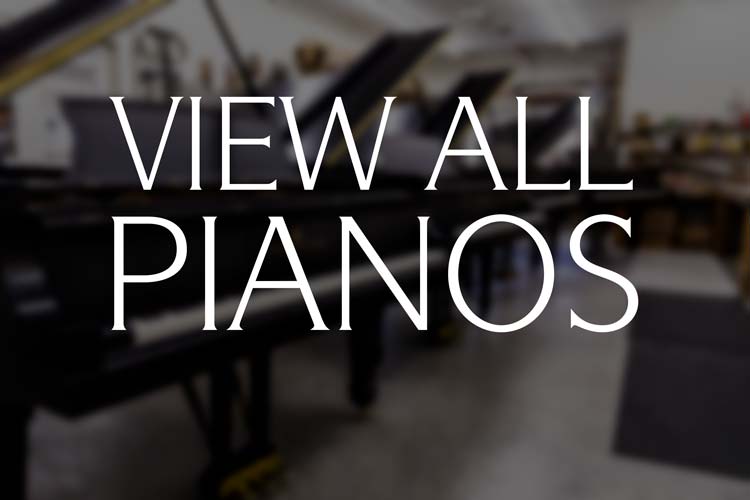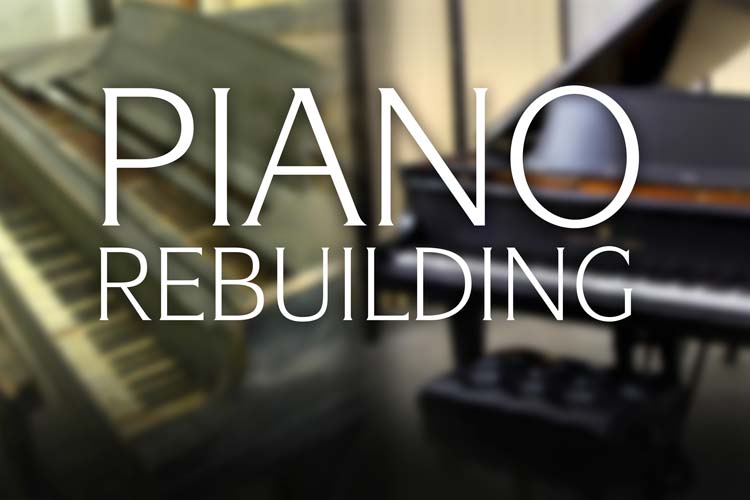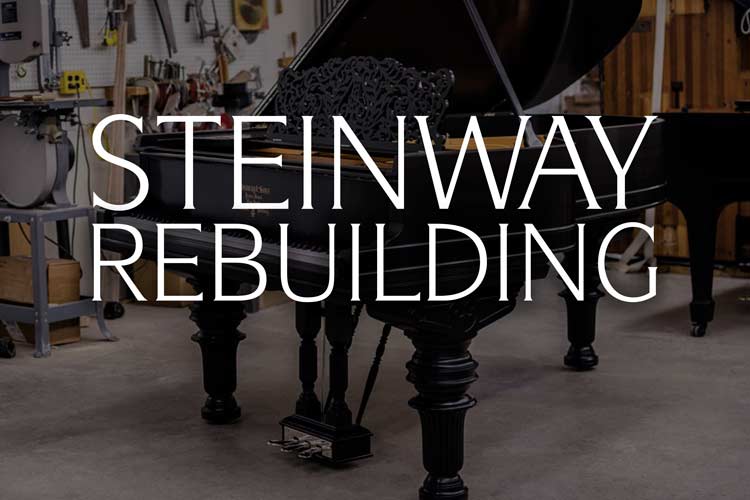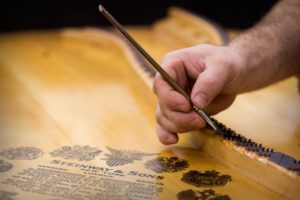The Piano Bridge | A Crucial Connection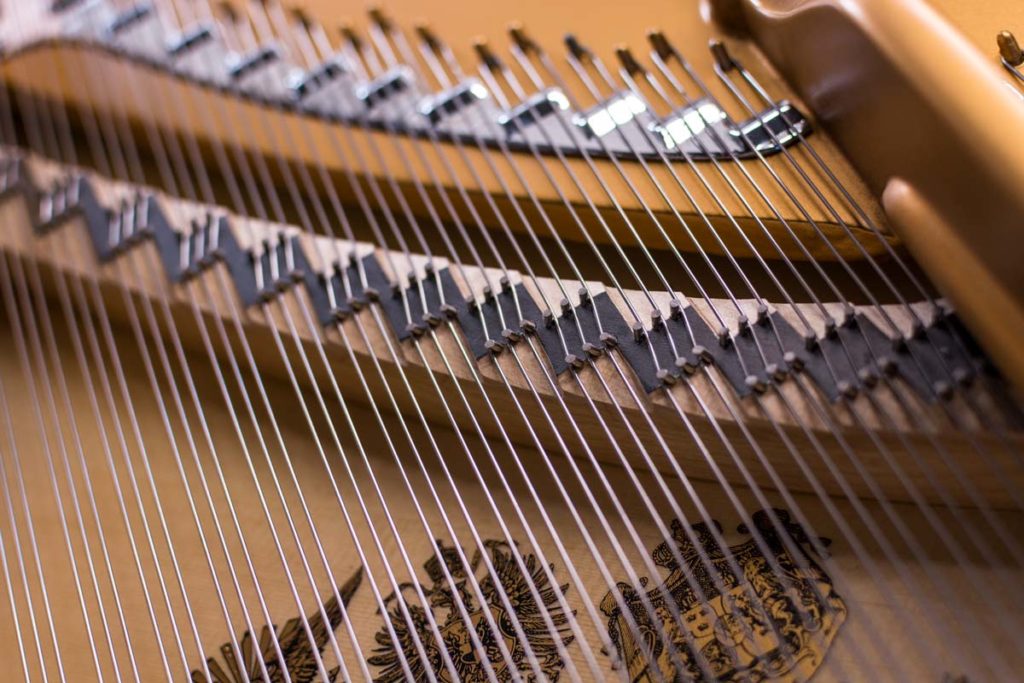
The bridge inside a grand piano serves as the link that connects the strings, which are the source of the sound (or tone), to the soundboard, which amplifies the sound. Without the bridge to transmit the string’s vibrations, a piano would not have the loudness of sound required.
A ‘standard’ grand piano has two bridges. One for the treble and (thinner) tenor strings. This is the longer bridge. The other is for the bass (thicker, copper wound) strings. It is the short bridge. Length of the bridge is proportional to the number of strings.
On a modern piano the two bridges are positioned so the strings will cross over each other (that is, they are overstrung.) The reason for this is to keep the strings in the central part of the piano, which is the most resonant part of the soundboard. This also allows for longer strings in a shorter cabinet design. The main benefit to this is a stronger, more powerful bass section.
Composition
A bridge must be heavily built to withstand the consistent pressure of string tension. Often made of maple or laminated strips of maple and beech, the hard wood of the bridge provides high structual stability. The bridges are capped with a layer of resilient hardwood which prevents the strings from cutting into the surface. A graphite paint on the surface allows the string to slide over the bridge smoothly when being tuned. This improves the stability and ease of tuning. Both bridges are fashioned to snugly fit the slightly curved crown of the soundboard. They are glued directly on top, then doweled or screwed from the bottom.
Notching & Bridge Pins
Notches chiseled into the bridge make the front end of the bridge slightly higher. Accurate notching is crucial; the cleanest tone comes when the termination point of the strings, bridge and bridge pin meet at the same location.
Metal bridge pins are bored into the bridge caps and serve to align and evenly space the over 220 strings inside a grand piano. With a pin on both ends of each string, that’s a total of over 440 pins driven into the bridge caps. The pins are graduated in size, with larger pins used for the bass strings, and smaller pins for the treble and tenor strings.
This double row of bridge pins installed at a 17 degree angle create a 7 degree deflection across the top of the bridge. Known as the side bearing, this proper angling is necessary to produce maximum transfer of tone to the soundboard.
Height | Setting The Downbearing
The bridge must be higher than the two end points – but it must be set just right. Bridge height directly affects the down bearing of the piano, which in turn not only affects the tone of the piano, but the wear and tear on the bridge. Too little bearing and the strings will not transmit the vibrations to the soundboard efficiently. Too much, and the needless pressure will stifle the board’s vibrations. With thousands of pounds of pressure being placed upon the soundboard, it is obvious that proper installation and the use of quality materials is essential in the crafting of the piano’s bridges.

